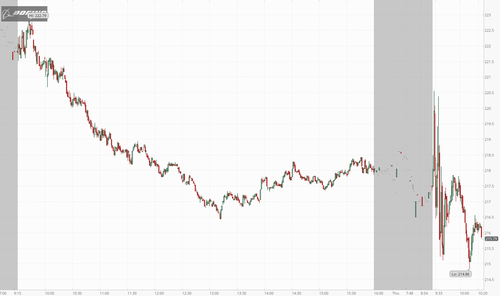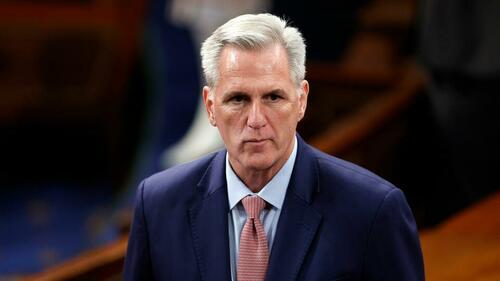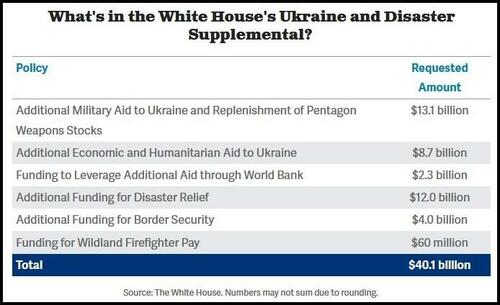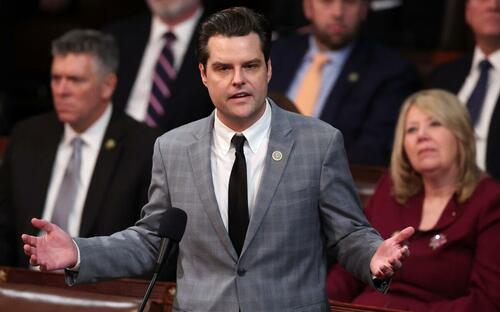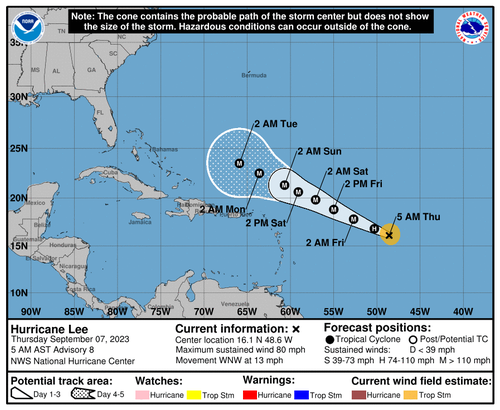In S.B.B. v. L.B.B., decided yesterday by the N.J. appellate court, in an opinion by Judge Greta Gooden Brown joined by Judges Patrick DeAlmeida and Stephanie Mitterhoff, the plaintiff husband and defendant wife were getting divorced, and the wife claimed that the husband wasn’t giving her a Jewish religious divorce. (The husband “denied withholding the get, claimed he had given the get to the Chief Rabbi of Elizabeth in June 2020.”) To quote the court,
In the Orthodox Jewish tradition, a married woman cannot obtain a religious divorce until her husband provides her with a contract called a “get” (pluralized as “gittin“), which must, in turn, be signed by an “eid,” or witness. A woman who attempts to leave her husband without obtaining a get becomes an “agunah” (pluralized as “agunot“), which subjects her to severe social ostracism within the Orthodox Jewish community. Agunot may seek relief in a “beth din,” a rabbinical court presided over by a panel of three rabbis. The beth din may then issue “psak kefiah,” or contempt orders authorizing sanctions, which include, but are not limited to, the use of force against a husband to secure a get.
The wife made a video, which ended up getting broadly distributed online, and in which she apparently said:
Hi. My name is [L.B.B.]. I’m a mother of four children and I live in the United States without any family for the last seventeen years. In August 2019, my husband left the house and we’re trying to get an agreement. We still did not get any of that. I tried to reach … the community Rabbi[ ] for help, and he said he will, and he got the get from my husband, but he is holding it for over a year now. The only way [the Chief Rabbi] can give it to me is by my husband permission. I’m seeking for help. I’m asking whoever can, please help me. To press [the Chief Rabbi] to let go of my get or to press my husband to give [the Chief Rabbi] the proof to give me the get. To release the get. Please, I really need this help. I want this get. I want this nightmare to be behind me. Whoever gonna help me, bracha [blessing] on his head.
This led to dozens of phone calls from strangers to the husband, and the husband said he feared it might lead to violence (which had sometimes happened to Jewish husbands who refused to give gets). The husband therefore sought and obtained a restraining order that
barred defendant from having “any oral, written, personal, electronic, or other form of contact or communication with [p]laintiff,” and specifically ordered defendant to “remove any and all posts from all social media platforms requesting the ‘get‘” and “cease and desist … creating and posting on all social media platforms.” …
The trial judge’s rationale was that the wife’s actions violated defendant’s right to privacy, and risked provoking some people to commit violence against the husband. The order was premised on a New Jersey statutory provision that labeled it illegal harassment to
with purpose to harass another, … [m]ake[], or cause[] to be made, one or more communications anonymously or at extremely inconvenient hours, or in offensively coarse language, or any other manner likely to cause annoyance or alarm.
But the appellate court held that this was unconstitutional, and I think this was correct, given NAACP v. Claiborne Hardware and Organization for a Better Austin v. Keefe, cited by the court. Here is the court’s summary of the legal landscape:
“[T]here is no categorical ‘harassment exception’ to the First Amendment’s free speech clause.” “Speech … cannot be transformed into criminal conduct merely because it annoys, disturbs, or arouses contempt.” “The First Amendment protects offensive discourse, hateful ideas, and crude language because freedom of expression needs breathing room and in the long run leads to a more enlightened society.” To that end, the right to free speech also includes the right to exhort others to take action upon that speech. “It extends to more than abstract discussion, unrelated to action.” In fact, “[t]he First Amendment protects the right to coerce action by ‘threats of vilification or social ostracism.'”
In NAACP v. Claiborne Hardware Co. (1982), Black activists in Claiborne County, Mississippi, organized a boycott of white-owned businesses when local civic and business leaders refused to assent to demands for equality and racial justice. “The boycott was supported by speeches and nonviolent picketing.” Additionally, “store watchers” stood outside the targeted businesses and took down the names of those who violated the boycott. Those names were then “read at meetings of the Claiborne County NAACP and published in a mimeographed paper entitled the ‘Black Times.’ … [T]hose persons were branded as traitors to the [B]lack cause, called demeaning names, and socially ostracized.”
In very public speeches, an organizer stated that violators would be “disciplined,” and warned: “If we catch any of you going in any of them racist stores, we’re gonna break your damn neck.” The boycott went on for years, during which several decentralized acts of violence occurred, including shots fired into the homes of boycott violators, beatings, property damage, and threatening phone calls.
The Supreme Court ruled that the speech, both identifying and castigating boycott violators and promising retribution, was protected by the First Amendment. The Court explained that even speech designed to prompt others to act through “social pressure and the ‘threat’ of social ostracism …. does not lose its protected character … simply because it may embarrass others or coerce them into action.”
Even the organizer’s speech, which invoked the specter of violence and “might have been understood as inviting an unlawful form of discipline or, at least, as intending to create a fear of violence,” was protected because “mere advocacy of the use of force or violence does not remove speech from the protection of the First Amendment.” The Court noted that no actual violence occurred directly following the statements, and there was “no evidence—apart from the speeches themselves—that [the organizer] authorized, ratified, or directly threatened acts of violence.” The Court cautioned that if such acts of violence did occur, there might be a question of whether the organizer was derivatively liable, but until then, the speech retained its protected status.
Similarly, in Organization for a Better Austin v. Keefe (1971), the Court addressed “a racially-integrated community organization[‘s]” actions “to ‘stabilize’ the racial ratio in the … area” by influencing a real estate broker who allegedly engaged in “blockbusting” or “panic peddling” tactics to scare white owners out of Chicago’s Austin neighborhood. The broker acted as the fleeing sellers’ agent to profit from the transactions. In an effort to curtail the practice, the organization began a campaign against the broker.
The organization traveled to the broker’s hometown, some seven miles from Austin, and began distributing leaflets that were critical of the broker’s practices. Some leaflets “requested recipients to call [the broker] at his home phone number and urge him” to sign an agreement to stop his real estate practices. One leaflet promised to stop the campaign once he signed the agreement. The organization distributed the leaflets at a shopping center, passed them to parishioners on their way home from the broker’s church, and left them at the homes of the broker’s neighbors.
Finding that the organization’s activities were an “invasion of privacy,” the state courts enjoined the organization from distributing the leaflets or picketing in the broker’s hometown. The appellate court reasoned that the activities were “coercive and intimidating, rather than informative and therefore … not entitled to First Amendment protection.”
The Supreme Court reversed, concluding that the organization’s activities were protected by the First Amendment. The Court emphasized that the fact that the organization’s intent was “to exercise a coercive impact on [the broker] does not remove” the First Amendment’s protections. Additionally, since the injunction was “not attempting to stop the flow of information into [the broker’s] household, but to the public,” the invocation of the broker’s right to privacy was unavailing.
In general, “[t]he mere tendency of speech to encourage unlawful acts is not a sufficient reason for banning it.” “The government may not prohibit speech because it increases the chance an unlawful act will be committed ‘at some indefinite future time.'” Thus, “[w]here a call to others to act neither conveys a plan to act nor is likely to produce imminent danger, it may not be criminalized, despite its unsettling message.” Although there is a narrow exception for speech that is “directed to inciting or producing imminent lawless action and is likely to incite or produce such action,” Brandenburg v. Ohio (1969), we have acknowledged that “[e]ven urging others to violence is shielded unless the statement is designed and likely to produce immediate action.”
In Brandenburg, the Supreme Court reversed the conviction of a Ku Klux Klan leader for statements made at a rally. At the rally, a group of hooded Klansmen, several carrying firearms, gathered around a burning cross. Following a series of anti-Black and antisemitic remarks and slurs from the group, a single individual began to speak. Among other things, he said: “[I]f our President, our Congress, our Supreme Court, continues to suppress the white, Caucasian race, it’s possible that there might have to be some revengeance [sic] taken.” He promised to march on Congress and elsewhere on July Fourth.
The speaker was convicted of violating a statute which proscribed “advocat[ing] … the duty, necessity, or propriety of crime, sabotage, violence, or unlawful methods of terrorism as a means of accomplishing industrial or political reform.” The Supreme Court summarily invalidated the statute, explaining that the “constitutional guarantees of free speech and free press do not permit a State to forbid or proscribe advocacy of the use of force or of law violation except where such advocacy is directed to inciting or producing imminent lawless action and is likely to incite or produce such action.” “[C]onviction for mere advocacy, unrelated to its tendency to produce forcible action,” is unconstitutional because it “intrudes upon the freedoms guaranteed by the First and Fourteenth Amendments.”
In U.S. v. Carmichael (M.D. Ala. 2004), the court explained that a “general history” of violence was insufficient to vitiate First Amendment protections. In that case, a criminal defendant facing drug distribution charges published a website with the putative goal of spreading awareness of his case and seeking information about individuals involved. The website displayed names and photographs of individuals labeled as “Agents” and “Informants” beneath a caption reading, “Wanted,” in large, red letters. The government sought a protective order requiring the defendant to remove the website from the internet on the ground that the website constituted harassment of the government’s witnesses or served to intimidate or threaten the witnesses. At an evidentiary hearing, a witness called by the government testified that the terms “wanted” and “informant” were “threatening” because the term “informant” had a “bad connotation among criminals and is equivalent to ‘snitch.'” The witness also suggested that “the website [was] meant to encourage others to inflict harm” on informants and agents.
Specifically citing four cases decided by federal circuit courts in the prior two years for context, the court acknowledged “numerous cases involving the murder of informants in drug-conspiracy cases.” Nevertheless, the court explained that the proper focus of the inquiry was defendant’s website itself, “not whether the site calls to mind other cases in which harm has come.” Thus, while the court acknowledged that the “broad social context ma[de] the case closer,” the “background facts” relied upon by the government were too “general” to rob the website of its First Amendment protections, particularly since the court could not find that the website served “no legitimate purpose” or “cross[ed] the line separating insults from ‘true threats.'”
As to the latter, the court acknowledged that “‘true threats’ are not protected by the First Amendment.” “‘True threats’ encompass those statements where the speaker means to communicate a serious expression of an intent to commit an act of unlawful violence to a particular individual or group of individuals.” “The ‘prohibition on true threats protects individuals from the fear of violence and from the disruption that fear engenders, in addition to protecting people from the possibility that the threatened violence will occur.'” However, “evidence of an atmosphere of general intimidation is not enough to find … a ‘true threat.'”
And given these precedents, the court held that the video was constitutionally protected:
[A]n unspecified general history of violent treatment to which get refusers were subjected was insufficient to render defendant’s video a true threat or an imminent danger to satisfy the incitement requirement…. [D]isseminating the names of get refusers “so that the reading public will hold them in disrepute,” and otherwise taking steps to “shun and embarrass a recalcitrant husband … do[es] not violate the criminal laws of the United States.”
Critically, the First Amendment “does not prohibit name[-]calling” and “protects ‘vehement, caustic, and sometimes unpleasantly sharp attacks’ as well as language that is ‘vituperative, abusive, and inexact.'” Similarly, “threats of vilification or social ostracism” do not lose their protected status. Claiborne Hardware Co. If the literal threat “to break … necks” in Claiborne, against a backdrop of actual acts of retaliation and violence committed by boycott supporters against boycott violators, was not outside the First Amendment’s protection, it is hard to see how defendant’s video, with, at most, only nonspecific threatening connotations, could be unprotected.
The judge’s suggestion that plaintiff had a right to not be subjected to anonymous phone calls, threats, or picketing at his house—especially absent evidence that defendant made calls herself or distributed plaintiff’s contact information—is likewise insufficient to render defendant’s speech unlawful. Only the #FREE[L.B.B.] photo image, which the judge did not attribute to defendant, identified plaintiff’s hometown, not the video. Moreover, there was no direct evidence of a link between the creation of the video, the dissemination of the video, and plaintiff’s receipt of anonymous phone calls. In any event, the acts of identifying an individual, encouraging others to call them and urge them to change their behavior, and picketing in their hometown are protected activities under Keefe.…
Because calls to exhort social pressure on plaintiff would necessarily fall under the aegis of First Amendment protection …, harassment must be found—if at all—in the threat of violence. However, the judge’s conclusion that such threats were real and imminent is simply not supported by the record. First Amendment protections cannot be vitiated on unsubstantiated findings of fact. The video itself, which was not even directed to plaintiff, contained no overt call for or reference to violence. Even an overt invocation of violence, however, would be insufficient to strip the statement of First Amendment protection.
Instead, to qualify as incitement and lose First Amendment protection—as the judge tacitly found—a communication must be both “directed to inciting or producing imminent lawless action and … likely to incite or produce such action.” Brandenburg. However, such is not the case on this record. The difference between lawful and lawless action “may be identified easily by reference to its purpose.” Claiborne Hardware Co. Defendant’s ultimate objective was unquestionably legitimate—it was to get a get. We are persuaded that under the circumstances of this case, the means employed by defendant to achieve her goal is entitled to First Amendment protection.
Of course, should plaintiff ever be subjected to the threat of violence at the hands of a third party, he will not be without recourse. In U.S. v. Stimler (3d Cir. 2017), a small group of rabbis were convicted of kidnapping-related charges when, ostensibly on behalf of agunot, they “worked with ‘tough guys’ or ‘muscle men’ in exchange for money to kidnap and torture husbands in order to coerce them to sign … gittin.” Thus, as evidenced in Stimler, the violent, unlawful pursuit of gittin can be prosecuted. But “[t]he normal method of deterring unlawful conduct is to impose an appropriate punishment on the person who engages in it.” Bartnicki v. Vopper (2001). “[I]t would be quite remarkable to hold that speech by a law-abiding [speaker] … can be suppressed in order to deter conduct by a non-law-abiding third party.” Id.
In sum, the judge’s finding that the Jewish community was prone to violence against get refusers—and the implicit holding that defendant was aware of and intentionally availed herself of such violent tendencies—is not supported by the record. The video was intended to get a get. The video did not threaten or menace plaintiff, and nothing in the record suggests that plaintiff’s safety or security was put at risk by the video. Neither plaintiff’s testimony that his father had been beaten for being a get refuser at an unspecified time and place nor defendant’s vague testimony that plaintiff’s father had been imprisoned for being a get refuser sufficed….
Note that, while I think this analysis is generally right, the statement that that “[e]ven urging others to violence is shielded unless the statement is designed and likely to produce immediate action”—drawn from Brandenburg—might not be entirely correct as to calls for criminal attack on specific people.
Generally speaking, Brandenburg‘s narrow incitement exception, which allows the punishment of speech that’s (1) intended to and (2) likely to (3) produce imminent illegal action, applies to abstract advocacy, which is to say calls to violate the law generally. For advocacy of more specific illegal action, such as crime against particular named people, the relevant exception is likely the solicitation exception, which probably allows the punishment of speech that’s intended to produce illegal action some time in the future. “You should beat up John Smith” is likely punishable solicitation even if the beating is contemplated for some unspecified time in the future. (For more on the solicitation exception, see U.S. v. Hansen (2023) and pp. 989-96 of this article).
But cases such as Claiborne make clear that this solicitation exception would apply only to speech as to which there is proof of intent to cause criminal attack, and not just to condemnations that—as here—might lead a few people in the audience to engage in criminal attack.
Jane J. Felton argued for the wife, and Shira Wisotsky and Karin Duchin Haber argued for amici supporting the wife.
The post Posting Condemnation of Ex-Husband, Urging Viewers to Contact Him, Is Protected by First Amendment appeared first on Reason.com.
from Latest https://ift.tt/FGrRYoT
via IFTTT
